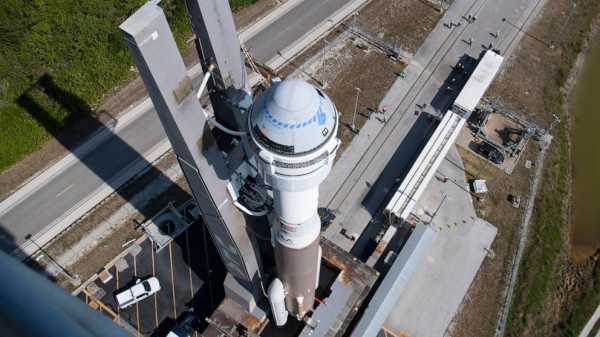
CAPE CANAVERAL, Fla. — Already running years behind, Boeing’s first astronaut flight is now off until at least next March.
Problems with the parachute lines and flammable tape surfaced during final reviews in late spring, ahead of what should have been a July launch for the Starliner capsule. Boeing said Monday that it should be done removing the tape in the coming weeks. But a redesigned parachute system won’t be ready until December.
If a parachute drop test goes well late this year, company officials said the spacecraft should be ready to carry two NASA astronauts to the International Space Station as early as March. Starliner’s first crew flight will need to fit around other space station traffic, however, so it’s too early to set even a tentative date, according to officials.
To ensure there are no other problems, NASA and Boeing are conducting independent reviews.
Boeing program manager Mark Nappi said technicians are almost halfway done peeling off flammable tape that was used to protect capsule wiring. Tape that cannot be removed from vulnerable spots will be covered with a protective coating.
The original guidelines for usage of the tape were confusing, according to company and NASA officials, but they later determined it could not be used in some areas because it was flammable.
The parachute issue will take longer to resolve. Part of the parachute lines known as soft links did not meet safety standards, having gotten past improper testing years ago. A new, more robust design will be incorporated into upgraded parachutes already in the works.
“There’s always the mystery of something else that can pop up,” Nappi told reporters. But given the current situation, “we have a pretty good schedule laid out” to launch as early as March.
NASA hired Boeing and SpaceX nearly a decade ago to deliver astronauts to and from the space station. SpaceX is now three years into its taxi service. Boeing has only had a pair of Starliner space test flights with no one aboard.
NASA said it still wants two competing crew launchers, even as the projected 2030 end of the space station program draws ever closer. The goal is to fly one Boeing and one SpaceX crew flight each year.
___
The Associated Press Health and Science Department receives support from the Howard Hughes Medical Institute’s Science and Educational Media Group. The AP is solely responsible for all content.
Sourse: abcnews.go.com






